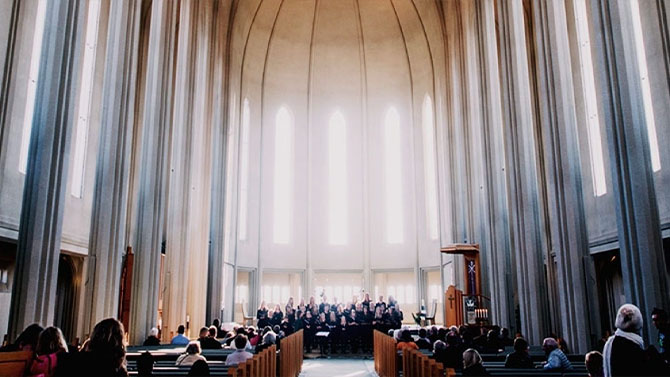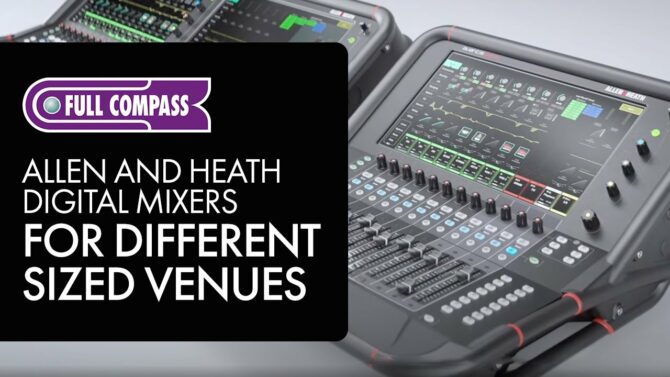Church audio production is complex; it can change drastically from week to week, and has the potential to include everything from amplified guitars to acoustic singers. If you are in charge of sound at your church, you face high expectations for producing an excellent mix that makes the pastor, musicians, and congregation happy. Whether you are outfitting a new, mobile church with a portable PA Definition:
Definition:
(Public Address) A sound system intended to provide audio coverage to large groups of people., or are working with a huge house of worship with an even bigger mixing console Definition:
Definition:
A control surface for audio, video, or lighting control positioned like a desk. Also called, Mixer, Controller, Board, or (British) Desk., here are the basics that you need to keep in mind.
Church Sound Part One: Your Microphones
When setting up and executing the sound at your church, the most important goal is to make sure that your pastor’s words are clear and audible to everyone in the room. The first step in achieving this goal is choosing the right vocal microphone. You will need to choose from dynamic and condenser microphones, and then make the decision whether to use cables or go wireless. If you have no idea where to start, a safe choice is the microphone that has been on the President of the United State’s podium for the last 30 years, the reliable Shure SM57.
You will also need to consider microphone location, especially if you are not using wireless microphones that can be easy relocated. Make sure that microphones are positioned at least a few inches away from each speaker's chin, and away from other sound sources. Placing them too close to the sound source can bring in too many low (or bass) frequencies, which in turn can cause speakers to be harder to understand, and creates the potential for feedback Definition:
Definition:
1. A squealing, chirping, or ringing sound when a microphone feeding a loudspeaker picks up audio from that loudspeaker. Also called howlround. 2. The state where a device's output connects back to the input..
Church Sound Part Two: Your Console
Does your church have a large console, or mixing board? Do you really know how to use it? Running a console well is a complex process that can require a lot of training and experience, but here are a few quick tips for beginners.
Most consoles will have four separate knobs: high frequencies, mid-range frequencies, low frequencies, and one for selecting the center frequency Definition:
Definition:
A value, expressed in Hertz, that indicates how many cycles of a periodic signal occur in one second. for the mid control. An easy way to understand what these knobs control is to equate them with the stereo Definition:
Definition:
A two channel signal simulating a sound space, typically played through two speakers. you have at home or in your car. High frequencies and midrange frequencies would be controlled by your treble knob, and the low frequencies by your bass knob. The mid-range control typically controls a two-octave Definition:
Definition:
A musical interval based on frequency. Halving or doubling a note's frequency brings it down or up by an interval of an octave, respectively. In Western music, an octave represents 12 semitones. range of frequencies in the middle of high and low.
These frequencies can be raised or lowered, to add crispness to high frequency voices or enhance low frequency instruments like the bass guitar. Low frequency sounds are often the source of feedback, so turning those down can help eliminate that unpleasant problem, and make most speakers easier to understand. Here are two common church sound issues where you may need to adjust these frequencies:
- Speakers with background music: Does your pastor like a soundtrack of live
 Definition:
Definition:
Live broadcast of an event or program without substantial delay or editing. or recorded music behind his or her speaking? You can adjust the frequencies to make “room” for the pastor’s voice within the music. - Different rooms: The frequency settings that sound great in one space won’t necessarily work in another room or at an outdoor event. The size and acoustics of each room can impact your mix.
Overall, one of the best ways to learn how to use your console is through trial and error. Before your first service in a new room or with new equipment, set up your microphones, instruments, and any recorded music. Test speaking and playing a few songs while you make adjustments on the console and see if you like what you hear.
Make A Commitment to Education And Training
One of the best ways to invest in your house of worship’s PA or audio system is by making sure that your staff has access to the training that they need. Ask for help from experienced congregation members, and consider sending them to learn from industry experts at events and professional conventions. Conferences offer knowledge in Tech Arts that will provide your team with new ideas, techniques and skills related to audio, video, lighting and streaming so you can make an immediate impact when you return to your home venue. Full Compass's own audio training expert, Kevin Peckham, will be sharing his knowledge as well.
Interested in hearing what Kevin has to say? Watch his WFX presentation here.
Check out specific models in the sidebar of this article, or call a friendly Full Compass Product Expert for ordering assistance or more details: 800-356-5844, Mon-Fri 9:00am-5:30pm CT.











